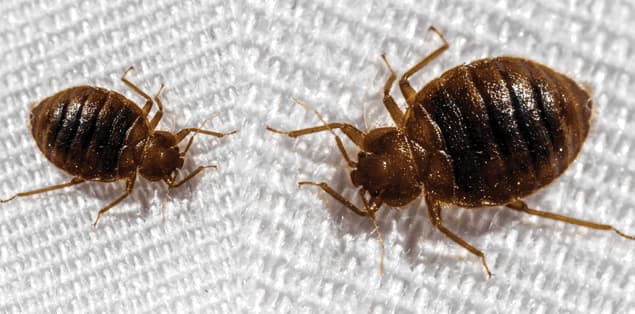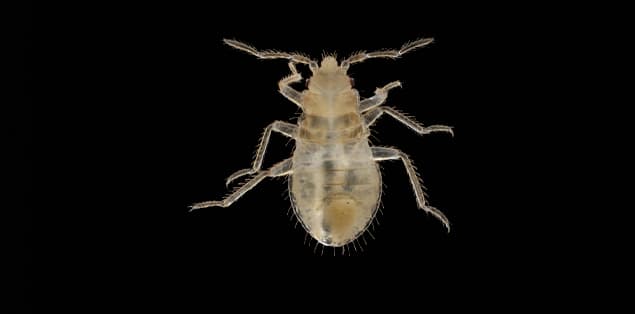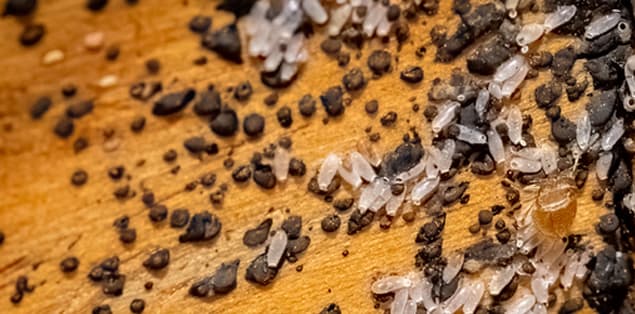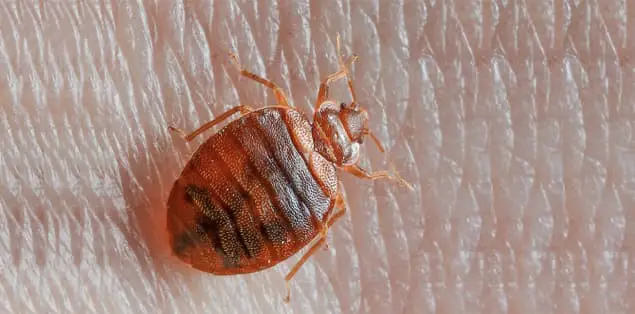Bed bugs have been around for a long time. They eat blood, although they aren’t known to transmit infections to people. Their bites might cause allergic reactions in some people. It’s not easy to get rid of a bed bug infestation, but there are things you can do to keep the problem under control. You can also take precautions to avoid importing bed bugs into your home.
Before feeding, bed bugs are small, flat, wingless insects that are reddish-brown and roughly a quarter-inch long (about the size and shape of a small apple seed). But where do bed bugs come from? During the day, they hide in the seams of mattresses, box springs, bed frames, headboards, and the cracks and crevices of walls, floors, and furniture. They only emerge at night. They cannot fly or jump, although they can crawl quickly.
What is the Main Cause for Bed Bugs?
The major causes of bed bugs are “hitchhiking” from an afflicted site or item to a previously non-infested location or item. Second-hand furniture, bed frame, luggage, dirty laundry, infested motel/hotel rooms, and backpacks that children carry home from school are all objects that allow bed bugs to hitchhike.
Because bed bugs feed on blood, they will travel from one spot to another in quest of a blood meal once inside. Bed bugs need to be able to conceal to survive. As a result, any crowded home or structure is an excellent site for bed bugs to go undiscovered until they become an infestation or bed bug problem.
Can You See Bed Bugs?
So, can you see bed bugs? Yes, however, they’re easily confused with various other insects, including their bat bug cousins, swallow bugs, and carpet beetles, making identification difficult unless you’ve been trained. They usually nest in hidden cracks and crevices until they come out to feed. However, there are a few indicators that you may have bed bugs in your house, including:
- The detection of bed bugs.
- Finding nymph exoskeletons or shed off bed bug eggs.
- If you notice brown stains on your headboard or bedding, don’t panic.
- Finding blood stains on your linens and pajamas is a common occurrence.
- Having red, painful insect bites when you wake up.
What Do Bed Bugs Look Like?
Adults

Adult bed bugs measure about a quarter of an inch in length. The insects have flat, oval-shaped bodies and are reddish-brown. They are thought to be the size of an apple seed by some. They may appear to be slightly larger and longer after a blood meal.
Nymphs

Bed bug nymphs resemble their adult counterparts in appearance but on a much smaller scale. They molt five times as they grow older, although they’re usually around the size of a sesame seed when they’re finished. Additionally, they begin their existence as translucent creatures that darken in color when they molt or turn red as they feed on blood.
Eggs

Bed bug eggs are tiny, measuring less than one millimeter in length. A dime’s side is around one millimeter thick, to put it in context. Bed bug eggs are white and in the shape of a pear.
Bed Bug Behavior and Habit
Understanding bed bug behavior (how they feed, live, and reproduce) will aid you in detecting an infestation before it becomes entrenched and monitoring for bed bugs after your home receives treatment.
Feeding:
- Human blood appears to be their preferred food, but they will also eat other mammals and birds.
- Will readily travel 5-20 feet from established harborage to feed on a host.
- Even though they are most active at night, they will seek out hosts during the day if they are hungry.
- Because 20 percent of the time, adults and large nymphs can empty leftovers of earlier blood meals while still eating, rusty or tarry patches might be seen on bed linens or in bug hiding places.
Life Stages/Mating:
- Before a bed bug may progress to the next of its six life stages, it must consume at least one blood meal.
- They can feed many times.
- Each step necessitates the shedding of skin.
- Both males and females must feed at least once every 14 days to continue mating and producing eggs.
How To Check for Bed Bugs?
It’s preferable to find bed bugs infestations as soon as possible before it becomes established or spreads. While treating a little infestation is inconvenient, it is significantly less expensive and time-consuming than treating the same infestation once it has expanded.
On the other hand, low-level infestations are significantly more challenging to locate and appropriately detect. Carpet beetles, for example, might readily be mistaken for bed bugs. If you misidentify a bed bug infestation, the bugs will have more time to travel to other sections of the house or hitchhike to another residence to create a new infestation.
Bed bug bites on the skin are a poor indicator of an infestation. Bed bug bites might resemble mosquito or chigger bites, rashes (such as dermatitis or fungal illnesses), or even hives. Some people have no reaction to bedbug bites.
Check around beds, mattresses, and other locations where you suspect bed bugs with a flashlight and a stiff, flat-edged tool like a credit card or paint scraper. As proof of a bedbug infestation, look for actual bugs, eggs, feces, or molted skin. Look for cracks, fissures, and wrinkles in the fabric and furniture. During this inspection, you might wish to put on some protective gloves.
Warmth attracts bed bugs. Mattresses and beds are the most common places for bed bugs to hide. Examine your sheets for any bloodstains that bed bugs could have left behind. Inspect the seams, tufts, and folds of your mattress and any corners or crevices of your bed completely.
How To Get Rid of Bed Bug Infestations?
Bedbugs are only 5 millimeters across, about the size of a pencil eraser. These bugs are intelligent and hardy, and they reproduce rapidly. Bedbugs know where to hide to evade discovery and can go months without eating. In her lifetime, a female can lay 500 eggs.
It should be no surprise that these tiny bloodsuckers can wreak havoc in your home. They can create red, itchy welts all over your body if they get into bed with you.
Hot Water
It’s time to wash your bedding, blankets, and even your clothes thoroughly if you suspect bed bugs have made a home in them. It’s critical to wash these objects in hot water to kill bed bugs as long as they can tolerate the heat. Heat treatment is an efficient way to get rid of these bothersome animals since the strong heat causes them to dehydrate. To give your clothes and linens an extra boost of heat, throw them in the dryer as well. The bed bugs will have a hard time surviving this.
Vaccum
Vacuum your bedding, furnishings, and even small cracks in your bed frame, walls, and wallpaper. You should vacuum even the box spring to the maximum extent possible. Use a brush to loosen any bugs or eggs on your mattress, upholstered furniture, and other surfaces.
Use a Desiccant
Desiccants are chemicals that kill insects by removing their protective coating. The bugs would dry out and perish if they didn’t have this coating. Silica aerogel and diatomaceous earth are two popular desiccants. Desiccants have a high death rate, and bed bugs cannot develop resistance to them.
Do Beg Bugs Go Away After Treatment?
You are highly likely to see bed bugs again in infested areas following the initial treatment. In reality, you may notice increased activity and observe more issues for a few days following the initial service. Still, you should see fewer and fewer bugs with each subsequent service.
Bed bugs can get into various inaccessible locations for treatment, which is why you may still encounter them after our treatments. You may find them under carpets, between or beneath floorboards, behind baseboards and crown molding, or beneath window or door frames. They also don’t feed every day (in fact, they usually only feed once a week). Thus a bed bug could be between meals when therapy is given and escape the treatment.
A range of factors influences the extent to which you can reduce populations and the rate at which you can reduce them. Items placed beneath mattresses, overflowing closets, stacks of papers, and overflowing boxes are just a few situations where we can’t adequately examine and apply pesticides that will allow these insects to thrive for longer periods. You will require follow-up visits to ensure that the bed bug infestation is completely eradicated.
Where Do Bed Bugs Bite?
Bedbugs can bite any region of your body. They will, however, generally bite exposed regions of skin as you sleep. Face, neck, arms, and hands are all included. The bug will bite along the line of your pajamas if you usually wear them to bed.
Bedbugs don’t necessarily eat at the same time every night. They can go for weeks without eating. While this may be a good thing, it can make detecting bedbugs in your house more challenging. In fact, recognizing that the bites are part of a wider pattern may take a few weeks. And this is an issue since bedbugs reproduce quickly. Every 3 to 4 days, a female can lay eggs.
Do Bed Bug Bites Itch?
You won’t feel a bed bug bite while sleeping, just like you won’t feel a spider bite. Bed bugs have a second defense mechanism that keeps you from feeling bitten. When bed bugs bite, they inject an anesthetic (numbing) and an anticoagulant (which prevents bleeding) into your skin. It’s possible that you won’t realize you’ve been bitten until the bite marks emerge, which can take anywhere from one to two days after the bites.
Most people get markings that look like mosquito or flea bites: slightly swollen marks with a reddish bruise in the center that itch or bothers. Bite marks are frequently in a straight line, although they can also be in a random pattern. Itching can be severe in certain persons.
Do Bed Bugs Fly?
Bed bugs appear out of nowhere and seem to appear out of nowhere. Because of their abrupt arrival, some people may wonder if bad bugs can fly. No, bed bugs are unable to fly. Bed bugs are crawlers with six legs and no wings. Any rapid spread of bed bugs, on the other hand, can be traced to human activity. They hitch a ride by attaching themselves to baggage, clothing, or flesh.
Can Bed Bugs Spread Through Plants?
Bed bugs may live in potted plants because the temperature is right for them. However, they frequently employ potted plants to transport them into the house. They can then proceed to their favorite areas, such as the mattress and sheets. They will enjoy the somewhat constant temperature.
They’ll need to be able to eat for it to be a long-term residence. Their favorite source is human blood. As a result, they’re more likely to hitch a trip on your pot plant before making a more permanent home in your mattress or linens.
Do Beg Bugs Crawl On The Carpet?
Bed bugs can, in fact, crawl on carpets. They migrate about your house on carpets. Bed bugs don’t usually migrate through rugs that are too deep. To crawl across the carpet, they stay high on the surface. You typically find bed bugs in your home.
If bed bugs are brought into your home unintentionally, they will end up in the room where people sleep or spend most of their time. Bed bugs may easily walk on carpets since they have a soft surface. It also provides them with a background to blend in and go unnoticed.
Can Bed Bug Live In Wooden Dressers?
Because bed bugs like to remain hidden, they will hide in cracks and holes in wooden furniture or buildings. Any wooden surface with cracks, grooves, or other open spaces could be a potential bed bug hiding spot.
Bed bugs need a safe location to hide and be close to humans to infest them. The bed and couch, which are close to where you spend most of your time, are the most likely to get infested.
Final Words – Where Do Bed Bugs Come From?
Bed bugs have been around for a long time. They eat blood, although they aren’t known to transmit infections to people. Their bites might cause allergic reactions in some people. It’s not easy to get rid of a bed bug infestation, but there are things you can do to keep the problem under control. You can also take precautions to avoid importing bed bugs into your home.
